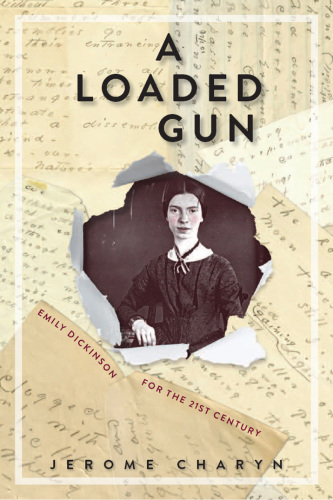
A Loaded Gun
Emily Dickinson for the 21st Century
کتاب های مرتبط
- اطلاعات
- نقد و بررسی
- دیدگاه کاربران
نقد و بررسی

Starred review from December 7, 2015
Novelist and nonfiction author Charyn (The Secret Life of Emily Dickinson) presents a postmodernism-flavored study of Emily Dickinson’s life and work. His lively reassessment draws on the work of other scholars, close readings of Dickinson’s poems and letters, and vivid commentary on the artists she inspired. Joseph Cornell created shadow boxes based on her poems, and Joyce Carol Oates’s futuristic short story “EDickinsonRepliLuxe” evokes the doll-like mystery of the only extant image of Dickinson—a daguerreotype taken when she was 16. At the heart of Charyn’s study is a quest to find out who Emily Dickinson really was. His answer is that she was not the reclusive virgin often pictured, but rather a woman of “Promethean ambition” who raged against a culture that had no place for unmarried, childless women. Looked upon as a “half-cracked village muse,” she guarded her privacy fiercely so she could work, often at a feverish pace, reinventing the language of poetry. She wrote about volcanoes, physical passion, wild beasts, rape, madness, and the grave, and was “at war with language itself” as if on a quest “to tear apart the order and hierarchy of all things.” For Charyn, Dickinson has no equal as a poet, except perhaps Shakespeare. No one else, he says, took the risks she did. Illus.

November 15, 2015
A writer obsessed with the Belle of Amherst imagines her rich, sensual inner life. After spending two years writing a novel, The Secret Life of Emily Dickinson (2010), Charyn (Bitter Bronx: Thirteen Stories, 2015, etc.) felt dissatisfied: "I knew less and less the more I learned about her." Now he turns to nonfiction, mining the prodigious research he conducted for the novel: biographies, literary criticism, archival research, "psychoanalytic studies of her crippled, wounded self, tales of her martyrdom in the nineteenth century, studies of her iconic white dress, accounts of her agoraphobia," and interviews with artists, poets, and scholars. Charyn analyzes artist Joseph Cornell's evocation of Dickinson and poet Adrienne Rich's empathetic interpretation. The result is an absorbing, though necessarily speculative, meditation on Dickinson's personality, yearnings, and elliptical poetry. For Charyn, Dickinson was a powerful, mysterious woman in charge of her own life. He dismisses the idea that she was a "helpless agoraphobic, trapped in her room in her father's house," although her father was overbearing and kept his daughters "on an invisible leash." Dickinson, he believes, was equally tyrannical. "She built a whirlwind around her and lived within its walls." She was "promiscuous in her own fashion, deceiving everyone around her with the sly masks she wore." She was an outlaw, "an alchemist," a "witch of the Imagination," "the mistress of her own interior time and space," and possibly bisexual. Charyn is intrigued by one scholar's argument that Dickinson had a romance with another woman, with whom she may have sat for a daguerreotype reproduced as the book's frontispiece. "None of us will ever get near enough to Emily," he writes ruefully. While much is speculation, Charyn's ardent sleuthing yields a daring portrait of the elusive "enchantress" and her world.
COPYRIGHT(2015) Kirkus Reviews, ALL RIGHTS RESERVED.

January 1, 2016
Almost everything about America's most mythical poet, Emily Dickinson (1830-86), is a mystery. In his nonfiction counterpart to his popular novel The Secret Life of Emily Dickinson, Charyn explores how the gaps in knowledge about Dickinson's biography and writings contribute to her ever-expanding mystique. As a result, Charyn's book forsakes chronology for meditations on thematic details he finds important in the poet's life, such as her complicated relationship with her parents; her dog, Carlo; her love affairs--whether real or unrequited--with men and women; and a recently discovered daguerreotype that might be the second-known photograph of Dickinson. Charyn also devotes plenty of pages to writers, artists, and scholars whom he feels have best understood Dickinson's writings, such as scholars Jay Leyda and Marta Werner, poet Adrienne Rich, and artists Joseph Cornell and Jen Bervin. VERDICT Despite the book's apparent lack of cohesion, Charyn is an engaging author who clearly appreciates his subject. The inviting prose allows readers with any degree of expertise on the life and work of Dickinson an entryway into her innovative, marvelous poetry.--Brian Flota, James Madison Univ., Harrisonburg, VA
Copyright 2016 Library Journal, LLC Used with permission.

























دیدگاه کاربران